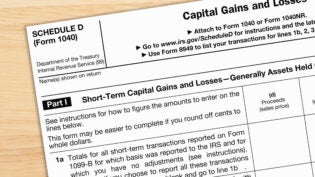
In any successful family business there will likely come a time when descendants will want to take over the business from the older generation of owners. Usually, this will require that entities will need to be split into different business entities to accommodate both differences between the descendants (perhaps the descendants can’t cooperate with each other) or managing risk, so that high risk business can be separated from lower risk businesses and investments (construction business needs to be separated from investment assets such as stocks, bonds, annuity assets).
Some alternatives, among many others, can be used depending upon what types of entity the various businesses are now conducting business. Of many concerns that have to be addressed is whether the separation can be affected through a “tax free” procedure, or a “non-tax free” procedure.
In C corporate form, there could be two levels of tax, one to the corporation when the asset is distributed and another upon receipt of the asset to the shareholder. So, assuming the highest applicable tax rates, if fully depreciated equipment worth $1,000.00 is distributed, then the tax to the corporation would be $390.00. The shareholder receives the net after tax proceeds of $610.00 which generates an income tax of $145.00. That $1,000.00 asset dwindles to $465.00 after these taxes.
An S Corporation can might avoid the first tax. The tax on the shareholder might also be avoided, too, if the shareholder has enough cost basis, but if not, the shareholder’s tax on the $1,000.00 asset generates a possible tax of $238.00.
To avoid either of these outcomes, businesses might be able to divide various components into separate businesses with different owners without any of these taxes. Internal Revenue Code §355 allows this, assuming a number of requirements are met, among which the: (1) distribution has to be to the stock-owning shareholder, (2) distribution maybe pro-rate, although in the family business situation, they don’t have to be, the distribution just can’t be equivalent to a dividend; (3) pre-distribution corporation, and the resulting corporations, must be “controlled corporation” meaning that at least 80% owned by the same group of shareholders; (4) corporation must be in an “active trade or business” for five years before the date of the distribution; (5) restructuring has to be for a business purpose of the distributing corporation for a substantial non-federal tax purpose; (6) pre-distribution and post-distribution entities have an ownership constituting a “constituting of interest,” and (7) entities must carry on a continuity of operations of the business or businesses existing prior to the separation.
There are more sub-requirements in each of the above requirements and other pitfalls that have to be considered in addition. Any possible use of §355 has to be carefully considered by experienced tax counsel. Consult current depreciation recapture rules at the time of transfers to ascertain their applicability.
Have a question? Contact Brett Thompson. Your comments are always welcome!












